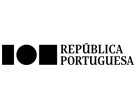


Publication in the Diário da República: Despacho nº 10766/2011 - 30/08/2011
6 ECTS; 3º Ano, 2º Semestre, 28,0 T + 14,0 PL + 28,0 TP + 5,0 OT , Cód. 911237.
Lecturer
- Ana Cristina Barata Pires Lopes (1)(2)
(1) Docente Responsável
(2) Docente que lecciona
Prerequisites
Not applicable.
Objectives
It is intended to provide students with knowledge on how to operate and use robotic systems, in particular regarding the technological aspects, the operating and programming characteristics of industrial robots, as well as their industrial applications and mobile robots. More specifically the sequential manipulator robots and the mobile differential robots will be approached in this course. It is also intended that students acquire knowledge about the morphology and kinematics of these types of robots. Navigation methods for mobile robots will also be discussed. It is also intended that students develop programming skills, in particular for the SCORBOT IX industrial manipulators (5 degrees of freedom) and MOVER 6 (6 degrees of freedom). Students will also have to acquire knowledge for mobile robot programming based on the Arduino and Raspeberry Pi platform and ROS (Robotic Operating System) operating system.
Program
1. Introduction.
2) Spatial descriptions and transformations.
3) Robot morphology:
i. Components of a robot;
ii. Joints;
iii. Work space;
iv. Kinematic structures:
4) Robot kinematics.
i. Direct kinematics
ii. Inverse kinematics;
5) Introduction to mobile robotics:
i. Actuators and Sensors for mobile robotics;
ii. Locomotion;
iii. Kinematic model of a mobile robot;
iv. Localization and mapping;
v. Navigation.
vi. Introduction to ROS, robotic platforms based on Arduino and Raspeberry Pi microcontrollers.
Evaluation Methodology
Laboratory and simulation work (60%); Written exam(40%) (minimum of 40% in the written exam and minimum of 50% in laboratory and simulation work).
Bibliography
- Craig, J. e Smith, P. e Giraldes, E. (1989). Introduction to Robotics. (Vol. -). -: Addison-Wesley Longman Publishing Co.
- Quingley, M. e Gerkey, B. e Smart, W. (2016). Programmimg Robots with ROS: a pratical introduction to the robot operating system. EUA: O'Reilly
- Siegwart, R. e Nourbakhsh, I. (2004). Introduction to Autonomous Mobile Robots. London: MIT Press
- Tzafestas, S. (2014). Introduction to Mobile Robot Control. 2014 Elsevier Inc.: Elsevier
Teaching Method
Lectures, practical exercises and lab experiments and simulations.
Software used in class
RoboCell Eshed Roboteq;
ABB RobotStudio;
Arduino Ide;
ROS (Robotic Operating System);
UBUNTU.

















